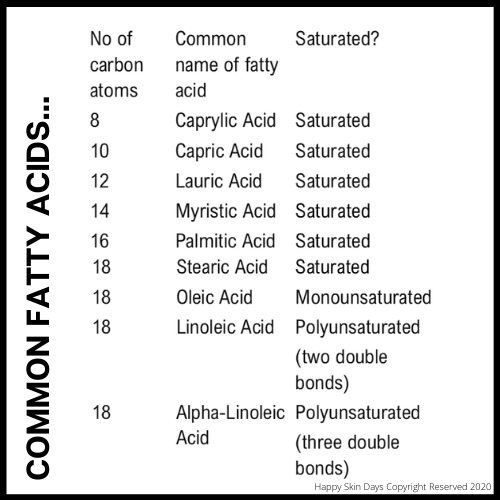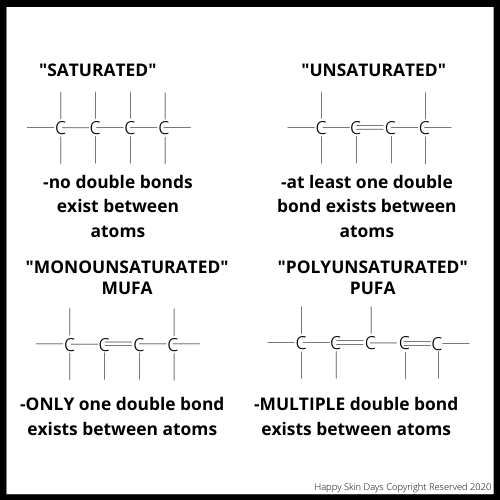Whenever I start a new area of products to review, I usually encounter a “woman” problem. Unless, I don’t become a semi-expert and completely understand what each labelled ingredient does, I do not feel comfortable talking or writing about the subject. This is a phenomenon whose name escapes me and is a particularly, encountered more in the female of our species and not so much in the opposite gender.
***
I wanted to write this blog because I quite deliberately have steered away from facial oils. They are expensive, and operate on the presumptuous, (preposterous and pompous) assumption, that we (meaningfully) understand and appreciate the importance of the fancy sounding oils and the marketing blurb around them.
For example, olive olive is good for you skin because its rich in “unsaturated” fatty acids. Similarly, oil XYZ uniquely has “polyunsaturated” fatty acids and has essential fatty acids. Another product claims to have linoleic, linoleic and alpha-linoleic acid.
At this point, I stop reading labels and reach for the (metaphorical) bottle in my life: Spelling Bee.
***
I want both of us to have a quick guide to decipher the jargon. Therefore, the purpose of today’s blog is to really breakdown the contribution of fatty acids to skincare. I’ll refer to this blog as I start to look at the composition of facial oils.
What is a fatty acid?
A fatty acid is essentially a carboxylic acid that ends with a -CH3 group. You’ll often read that (e.g.) Olive Oil is rich in Oleic Acid (which is a fatty acid) and that makes it sound as if that’s all Olive Oil contains. That’s not correct. The Oleic Acid is not present in free form, but in compounds (called triglycerides) that contain multiple fatty acids. Prominent in this case is Oleic Acid. However, Olive Oil contains a bunch of other chemicals including vitamins.
The actual chemical composition of the olive oil in your facial oil depends on factors such as:
- its source (where it was grown)
- whether the oil is organic or not
- process of extraction (cold-pressed preserves anti-oxidants, vitamins and mineral)
These are the common types of fatty acids encountered on the ingredient label of products.

What are saturated, unsaturated fatty acids, MUFA, PUFA?
This is how I remember all of these

PUFA: polyunsaturated fatty acid
MUFA: monounsaturated fatty acid
The immediate consequence of having an oil rich in saturated fatty acids is that it has a higher melting point, because the compounds that make it up are stable. E.g., coconut oil is rich in saturated fatty acids and can be a semi-solid at RTP.
What is the function of the skin?
One of the primary functions of the skin is to keep the external hostile environment separate from the internal environment of our bodies. If we had no skin, survival would be impossible simply because the air around is us is so dry we would literally dehydrate without our skin.
The skin is comprised of keratinocytes that are embedded in an extracellular lamellar lipid matrix. The protein structure of the skin – the corneocytes – provides mechanical strength to the skin. The lipid structure is hydropobic and acts as a permeability barrier to both water and electrolytes.
(see also my blog on Skin Barrier)
What is the function of fatty acids in the skin?
In a nutshell, the most important functions of fatty acids in the skin are:
- Lipids are essential for the permeability function of the skin and fatty acids are building blocks of these lipids. Fatty acids form triglycerides, phospholipids, glycosylceramides and ceramides – which are essential for the lipid barrier:
- They contribute to the acidic pH of the stratum corneum surface
There are other functions, but I will stop here.
Where do fatty acids in the epidermis come from?
The skin comprises of three layers: epidermis (topmost layer), dermis (middle) and hypodermis (bottom). We are concerned with the epidermis
The Epidermis itself is a very active site of fatty acid synthesis. Fatty acids with carbon chains of upto C16 are synthesised in the epidermis (by an enzyme called FAS).
As cells mature in the epidermis (cornified), the short chain Fatty acids (Carbon chains <16) are elongated. Typically replaced by long-chain saturated fatty acids (ranging from 14 to 28 carbon in length).
The most abundant carbon chain length in the epidermis is 22-24.
Its important to note that the keratinocytes in the epidermis do not produce sufficient quantities of fatty acids and there has to be some type of supplement that either comes from internally (inside the body) or is supplemented.
What are essential fatty acids?
Its also noteworthy that there are 2 specific types of fatty acids that the epidermis cannot produce:
LINOLEIC ACID
ALPHA-LINOLENIC ACID
Also, the epidermis does not have the necessary enzyme to produce some long chain fatty acids (Arachidonic Acid from Gamma Linolenic acid) and these must therefore be transported to the epidermis.
Something is “Essential” (like Vitamin C) if our body needs it but does not currently have the ability to produce it. Similarly, our bodies need these “essential fatty acids” because we cannot produce them.
MOST IMPORTANTLY (AND IF YOU TAKE AWAY ANYTHING FROM THIS BLOG) LET IT BE THIS:
BOTH TOPICAL APPLICATION AND ORAL SUPPLEMENTATION ARE EFFECTIVE MEANS OF DELIVERING ESSENTIAL FATTY ACIDS TO THE SKIN AND SYSTEMIC CIRCULATION
What happens if you do not get a sufficient quantity of essential fatty acids?
A deficiency of Essential Fatty Acids (EFA) causes all manner of problems: atopic dermatitis (very dry skin), hair loss and scaly skin.
What are Omega-3 and Omega-6 essential fatty acids?
Omega-6 EFA are:
- Linoleic Acid (LA)
- Gamma-Linoleic Acid (GLA)
- Dihomo-γ-Linoleic Acid (DGLA)
- Arachidonic Acid (AA)
Omega-3 EFAs are:
- Alpha-Linolenic Acid (ALA)
- Eicosatetraenoic acid (ETA)
- Eicosapentaenoic acid (EPA)
- Docosahexaenoic acid (DHA)
Sources of Omega-3 and Omega-6 from a facial oil perspective?
Omega-6 rich oils are:
- Sunflower seed oil
- Safflower oil
- Evening primrose oil
- Borage oil
Omega-3 rich oils are:
- Flaxseed oil
- Fish oil (which, I guess no one is putting on their face…)
In my next blog I will be looking at the specific details of how these fatty acids help in the skin barrier…as well as what is in your facial oil…
I am not keen on currently doing a dietary source of Omega-6 and Omega-3 fatty acids (but famous last words)….
